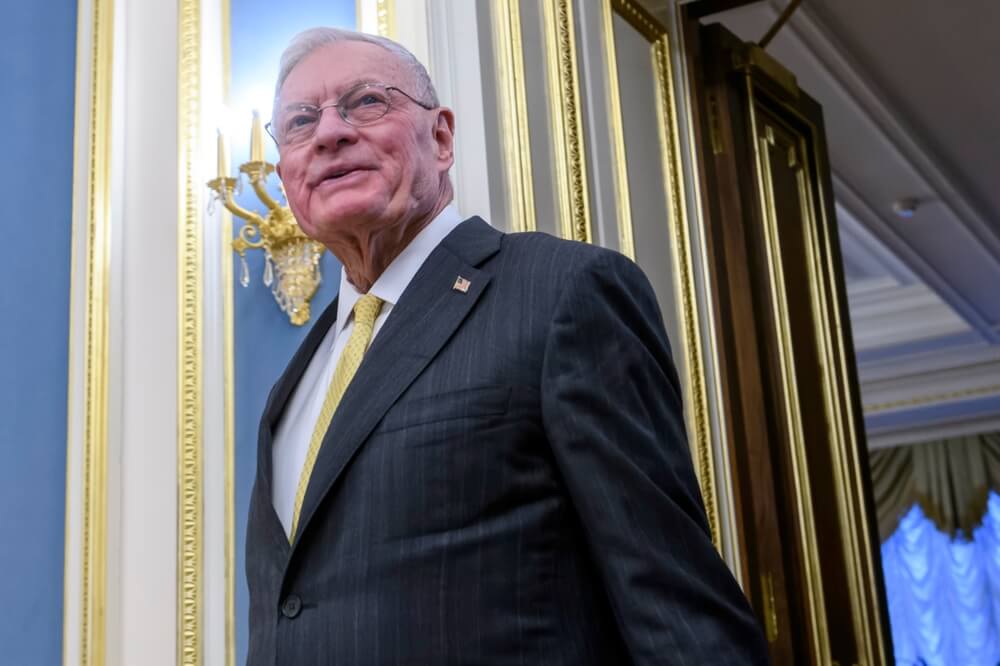European efforts to secure security support for Ukraine despite the US withdrawal are neither proceeding swiftly nor smoothly, and they are accompanied by increasing indecision within the "coalition of the willing."
The NATO ministerial meeting last Thursday and the meeting of the coalition supporting Ukraine last Friday showed that there is still a deep divide between the concept of continued support for Kyiv advocated by the European powers on the one hand and Washington on the other.
The EU's top diplomat and former Estonian Prime Minister Kaja Kallas has announced with some disappointment that the partners in the "coalition of the willing" failed to present any clear plans for supporting Ukraine in the post-war period.
Her country is one of the few still backing the British-French initiative to continue full support for Ukraine’s defence against Russian aggression and military support for Kyiv in the post-peace period.
Many others are sceptical about EU involvement in Ukraine without strong US support.
"The different member states have different opinions, and the discussions are still ongoing," said Ms Kallas after the meetings in Brussels. She also said there was no progress regarding plans for the deployment of European troops in the peacekeeping mission in Ukraine.
British Defence Minister John Healey tried to soften Kaja Kallas' pessimism by saying that the Franco-British-led coalition's plans were "real" and "well advanced."
Fewer countries prepared to send troops to Ukraine
Nevertheless, the impression remains that there is a growing reluctance among the partners towards independent European engagement in Ukraine, at the same time as they are waiting for Washington's final plan on the resolution of the war in Ukraine and particularly regarding the management of the post-war period.
Currently, only six countries have firmly confirmed that they are ready to send their troops to Ukraine as part of the peacekeeping contingent under the "coalition of the willing", as AFP reported during the Brussels meeting of NATO defence ministers last Thursday.
In addition to the United Kingdom and France, which lead this bloc, there are three Baltic states and one other NATO member state that has not been named.
The European allies have apparently stalled in their plans to create a security framework for Ukraine after the ceasefire
This number is smaller than previous estimates, for example, by Bloomberg earlier this week, according to which up to 15 countries were prepared to send their troops to Ukraine.
Regardless of the numbers, the European allies have apparently stalled in their plans to create a security framework for Ukraine after the ceasefire, without the US.
This is mainly due to the fact that President Trump continues to treat the European allies as secondary players in the peace negotiations with Moscow.
Intensive talks between the USA and Russia
The fact that US Secretary of Defence Pete Hegseth did not attend last Friday's meeting of the 50-member coalition for military assistance to Ukraine and that it was the first time in three years that the US Secretary of Defence has not attended the meeting of the group he founded shows very convincingly that the US continues to withdraw from allied forums for assistance to Ukraine.
While the representatives of NATO and its partners were in Brussels, Trump's diplomatic envoy Steve Witkoff was in St. Petersburg, where he had a long, four-hour meeting with Vladimir Putin.
Frequent high-level talks between Washington and Moscow give Europeans little hope that the US will soon involve them in creating the conditions for ending the war in Ukraine
At the same time, high-ranking American and Russian diplomats in Istanbul continued the dialogue that began in Saudi Arabia in February, which includes, in addition to Ukraine, the normalisation of diplomatic relations. Last week, Putin's envoy Kirill Dmitriev was in Washington, also for talks on Ukraine.
These frequent high-level talks between Washington and Moscow give Europeans little hope that the US will soon involve them in creating the conditions for ending the war in Ukraine.
Catering to Moscow's interests, not Ukraine's
Trump's envoy to Ukraine, Keith Kellogg, hinted at one of the directions in which the US-Russian talks are moving by mentioning the division of Germany after the Second World War in the context of the future Ukraine.
"You look at a map and you create, for lack of a better term, a demilitarised zone. Take both sides back up 15 kilometres each, that's 18 miles," General Kellogg told The Times, presenting the idea of a possible separation of warring troops in eastern Ukraine during the ceasefire.
 Keith Kellogg hinted at one of the directions in which the US-Russian talks are moving by mentioning the division of Germany after the Second World War
Keith Kellogg hinted at one of the directions in which the US-Russian talks are moving by mentioning the division of Germany after the Second World War
Envoy Steve Witkoff presented a similar concept to President Trump earlier this month, suggesting that Russia would retain "ownership" over four occupied Ukrainian regions in the east as the quickest route to a ceasefire.
This direction is undoubtedly in line with Russia's interests to retain control over the parts of eastern Ukraine that it has militarily occupied and annexed.
As a result, the Europeans are becoming more cautious and reserved about deploying their troops to Ukraine while they await the outcome of the peace negotiations, which are still ongoing between only the US and Russia.